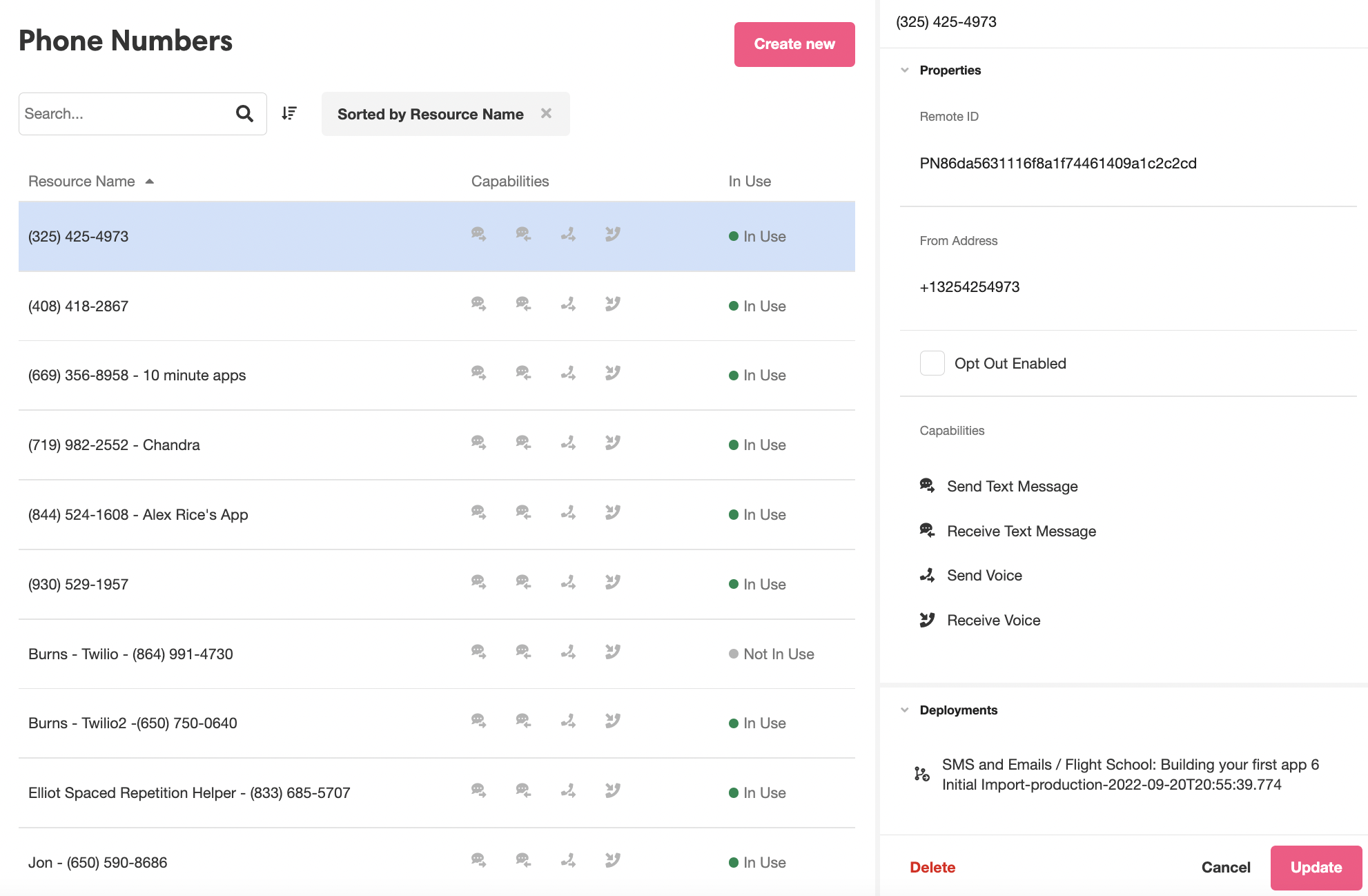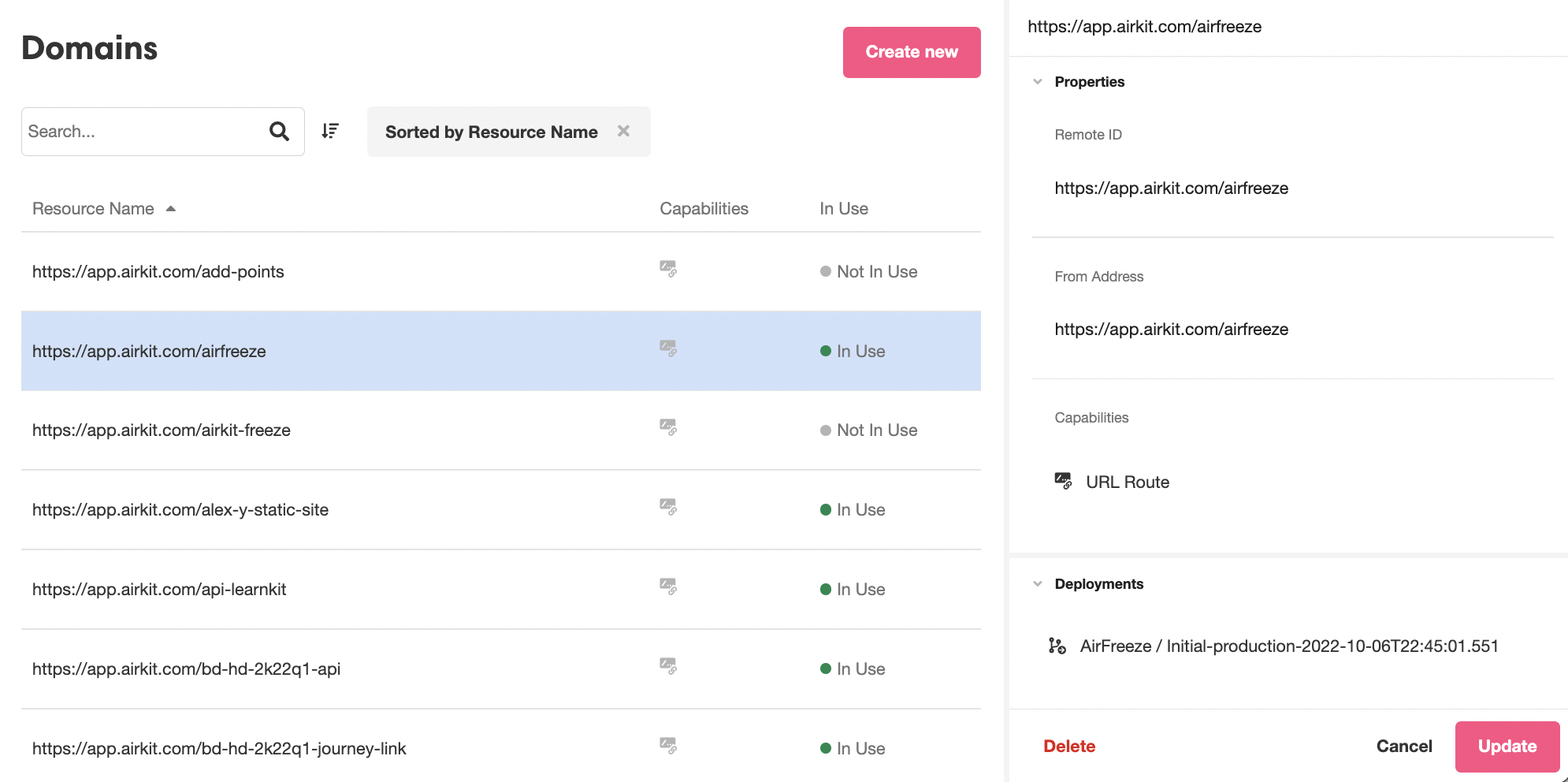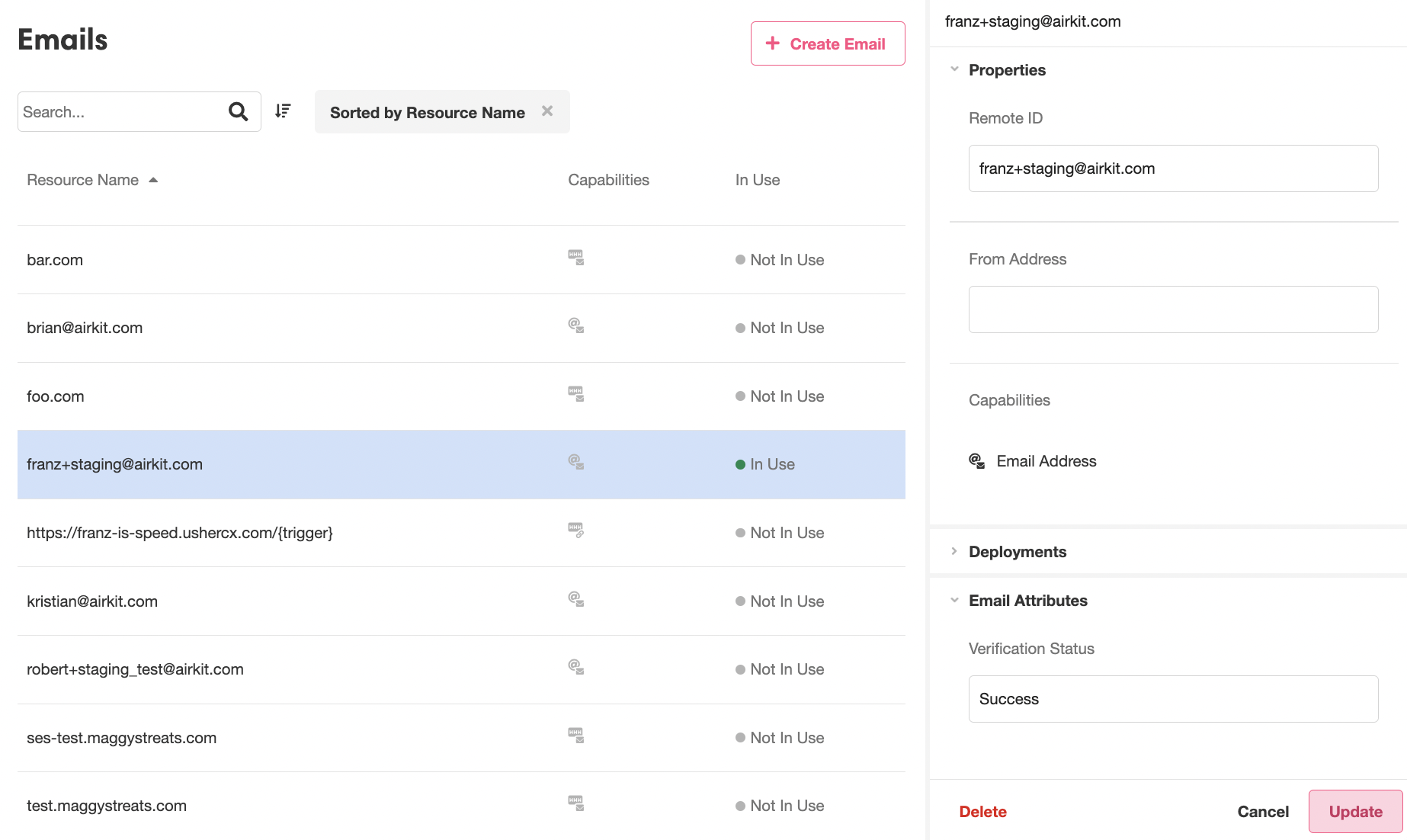Resources
The Resources Tab is where you'll configure the resources that can be used to connect directly with the users of your applications. This includes:
- Phone Numbers - send and receive calls and text messages through configured phone numbers
- Domains - white-label URLs that can be used to access your web apps
- Emails - send emails through individual email accounts or configured email domains
- Embeds(deprecated) - embed Airkit apps into your existing websites without using the SDK.
Phone Numbers
Phone numbers are managed with Twilio. Once you've connected your Twilio account to your Airkit Org, you can configure any phone numbers you bought from Twilio by clicking on the Create New button and defining the relevant phone number appropriately. Once a phone number has been configured, it can be tied to an application and used to manage voice and SMS channels. For more on how to use your Twilio numbers in Airkit, see Connecting Twilio Numbers.
Once you've connected your Twilio number, you'll see it displayed in the Stage. Clicking on a phone resource will open up a summary of its capabilities in the Inspector:

Under the Properties section, you'll find a summary of the phone resource, including its Remote ID, the full phone number including the country code, and the capabilities of the phone resource.
There is also an option to check off "Opt Out Enabled". Should a checkmark appear here, Airkit will enforce TCPA opt-out requirements under the hood. For more on TCPA opt-out requirements and when to be concerned about them, see TCPA.
Even if "Opt Out Enabled" is not checked off, TCPA opt-out requirements will still be enforced as a feature of Twilio.
Under the Deployments section, you'll find a list of the published applications actively using the phone resource, if any.
Domains
Creating a Domain resource allows you to white-label the links associated with your Airkit apps, see Custom Domains.
Once you've connected your domain, you'll see it displayed in the Stage. Clicking on a domain resource will open up a summary of its capabilities in the Inspector:

Under the Properties section, you'll find a summary of the domain resource, including its Remote ID, the full URL used to access the domain, and the capabilities of the domain resource.
Under the Deployments section, you'll find a list of the published applications actively using the Domain resource, if any.
Emails
Configuring an email resource allows you to send outgoing emails from your Airkit apps. Email resources can be configured either at the domain level or as individual email addresses. For more about how how to configure both, see Connecting Email Addresses.
Once you've connected an email address, you'll see it displayed in the Stage. Clicking on an email resource will open up a summary of its capabilities in the Inspector:

Under the Properties section, you'll find a summary of the email resource, including its Remote ID and the capabilities of the email resource.
Under the Deployments section, you'll find a list of the published applications actively using the email resource, if any.
Under the Email Attributes section, you'll find the Verification Status of the email resource. Email resources must be successfully verified before they can be used to send outgoing emails from applications. For more on email verification, see Connecting Email Addresses.
Embeds (deprecated)
Feature DeprecatedIf you have not incorporated an Embed into an application made in a previous version of Airkit, Embed resources will not be available to view or add. If you are looking to insert your Airkit apps into existing websites, use the Web SDK instead.
If you are maintaining an old embed, you can read more about how to configure them in the v18.3 documentation.
Updated 4 months ago